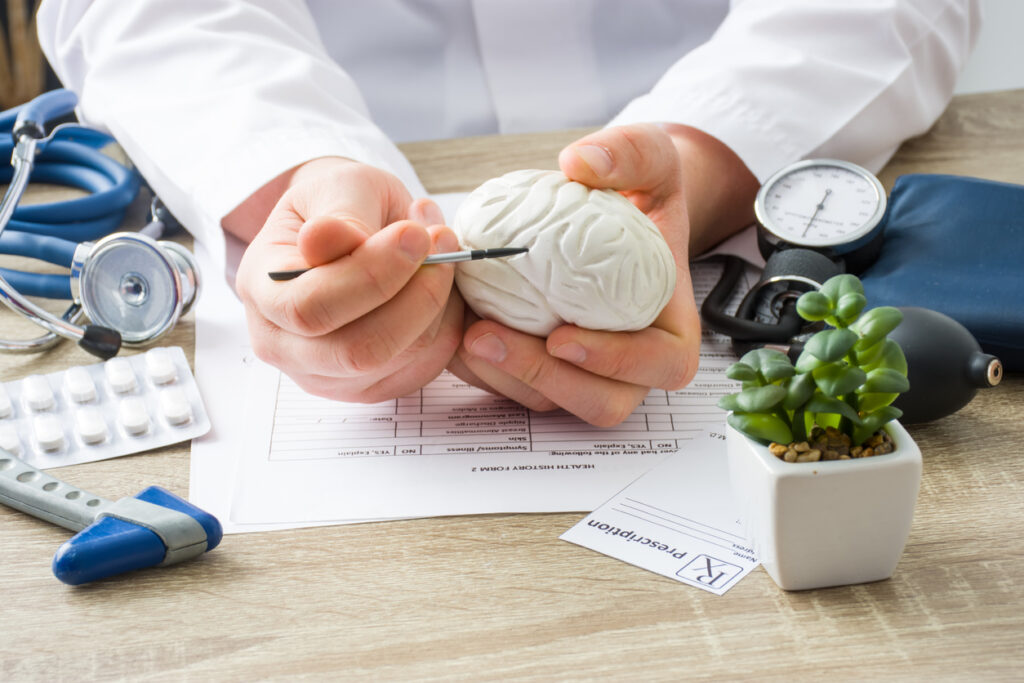What is CTE?

Chronic Traumatic Encephalopathy (CTE) is a progressive, neurodegenerative brain disease believed to result from repeated head injuries, particularly concussions or subconcussive blows.
Characterized by the accumulation of a protein called tau in the brain, CTE is most commonly associated with contact sports, such as American football, soccer, boxing, and ice hockey. However, it can affect individuals who have experienced repeated head trauma in other situations.
Hurt? Need a Lawyer? Hire Murray
Give us a call for a FREE & CONFIDENTIAL Case Review
A Brief History of CTE
The first known observations of symptoms similar to those of CTE can be traced back to the 1920s when a condition known as “punch drunk syndrome” was used to describe certain boxers. Those identified with such a condition often exhibited slurred speech, tremors, and various issues of cognitive impairment.
Over the years, the understanding of CTE has expanded to include other contact sports and military veterans who have been repeatedly exposed to severe head trauma. In 2010, the National Football League (NFL) formally acknowledged the link between football and CTE, which led to increased research and improved safety measures in the sport.
What Are the Symptoms of CTE?
When the protein tau is found in excessive amounts in the brain, it can lead to a range of neurological and psychological symptoms, including but not limited to:
- Memory problems
- Impaired judgment and impulse control
- Aggression and mood swings
- Depression and anxiety
- Impaired motor skills and movement
- Speech and language difficulties
- Confusion
- Suicidal ideations
These symptoms usually do not appear immediately after the head injuries but develop many years later. The symptoms of CTE can be debilitating and may be mistakenly attributed to the normal process of aging. Alternatively, they may result in an incorrect diagnosis of Alzheimer’s or Parkinson’s disease, as the symptoms are very similar.
Dallas Brain Injury Lawyer? Hire Murray
Give us a call for a FREE & CONFIDENTIAL Case Review
Diagnosis and Prevention of CTE
Formally diagnosing CTE in patients can be challenging, as it can only be definitively diagnosed after death by an analysis of the patient’s brain tissue. Doctors who specialize in brain diseases take portions of the brain tissue and apply special chemicals to make the tau protein visible.
While researchers are working on developing more accurate diagnostic tools for patients while they are alive, at present, it remains a difficult condition to diagnose accurately.
Due to the fact that CTE cannot be definitively diagnosed until after death, developing prevention strategies presents challenges. However, prevention most certainly begins with reducing head injuries, especially in high-impact sports and professions.
These prevention steps include making improvements to equipment, rule changes in sports, proper and frequent education and counseling related to head trauma, and appropriate medical care from the injury onset.
Treatment for CTE
Currently, there is no cure for CTE, and treatment plans focus primarily on managing the symptoms and improving the patient’s quality of life.
Symptom management can include medications such as antidepressants and mood stabilizers. Cognitive therapy and/or psychotherapy and counseling may be helpful for individuals struggling with emotional, behavioral, or memory issues.
Certain lifestyle adjustments may be critical in the treatment of CTE. Avoiding any further trauma to the head is crucial and often means limiting or discontinuing participation in contact sports and high-risk activities.
In addition, the adoption of a healthy lifestyle is vital, including regular, light exercise, a balanced diet, and quality sleep habits. It’s important to note that early diagnosis and intervention are critical in managing CTE.
Living With CTE
If you or someone you know is living with CTE, there are a number of tips for daily living, which can make life more enjoyable.
First, write things down throughout the day. If your experience with CTE has presented memory problems, writing things down can help keep you on track and make you feel in control of your schedule.
Second, develop a daily routine. Operating in a structured environment adds to a sense of stability, and accomplishing those daily tasks increases one’s satisfaction and sense of achievement.
Third, stay away from unhealthy habits, such as alcohol and drug use, gambling, overspending, and other toxic behaviors.
Fourth, improve your sense of self-awareness and regulation. Managing your emotions and stress is a learned skill, but it can be made easier by practicing simple techniques, such as meditation and breathing exercises.
And finally, create a strong support system around yourself. Whether it’s friends, family, medical professionals, colleagues, a faith-based community, or a club, surrounding oneself with supportive and educated individuals is imperative.
Contact Our Brain Injury Law Firm in Dallas, TX
If you’ve been injured in an accident in Dallas, Texas, and need legal help, contact our Dallas [RELATED PRACTICE AREA] lawyers at Jay Murray Car Accident and Truck Accident Lawyers to schedule a free consultation today.
Jay Murray Car Accident and Truck Accident Lawyers
2512 State St,
Dallas, TX 75201
(214) 855-1420
